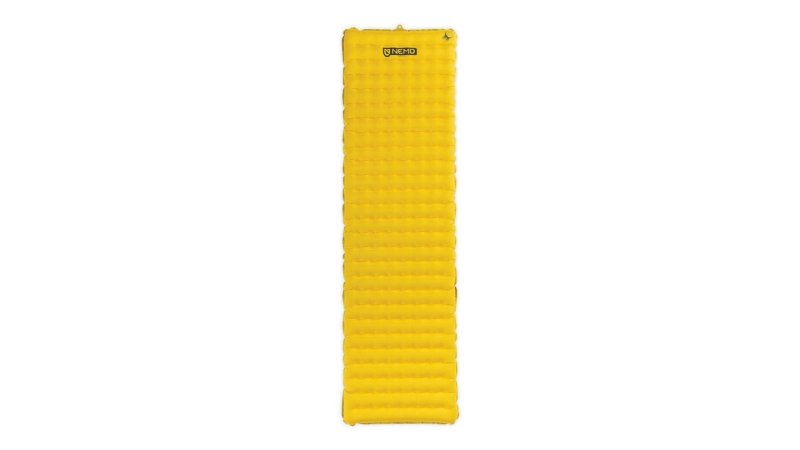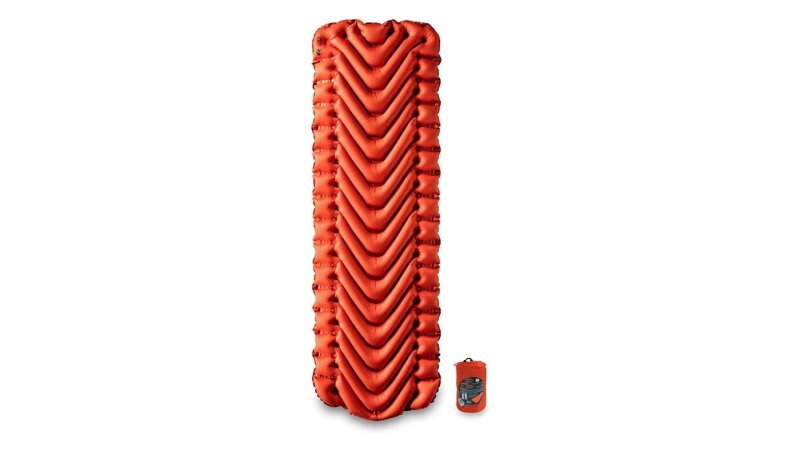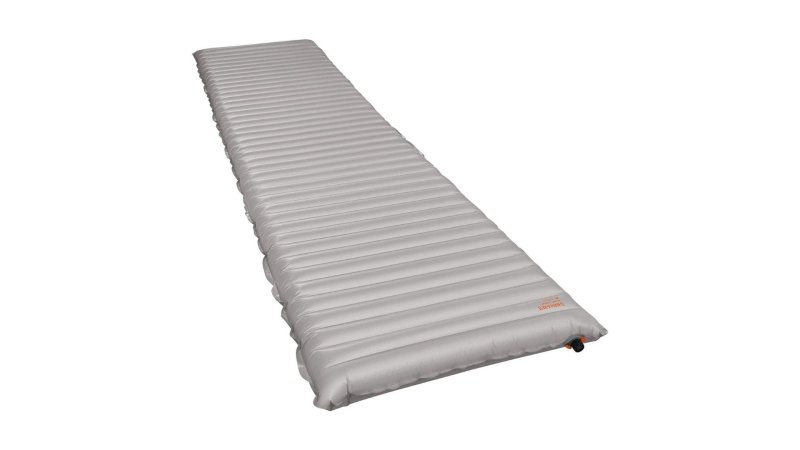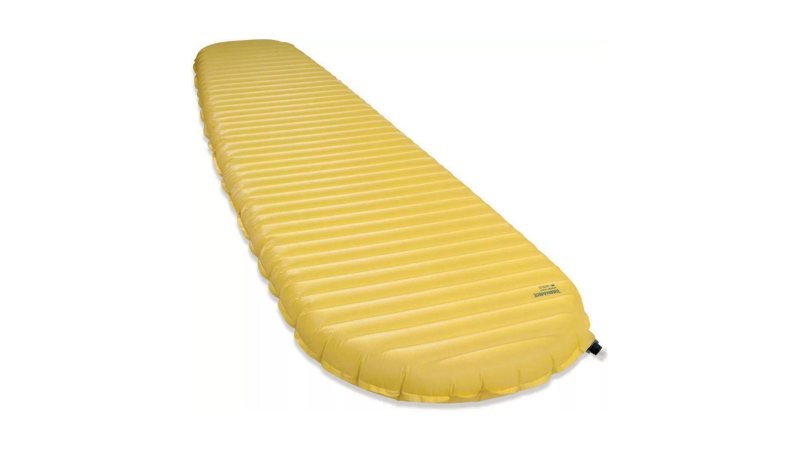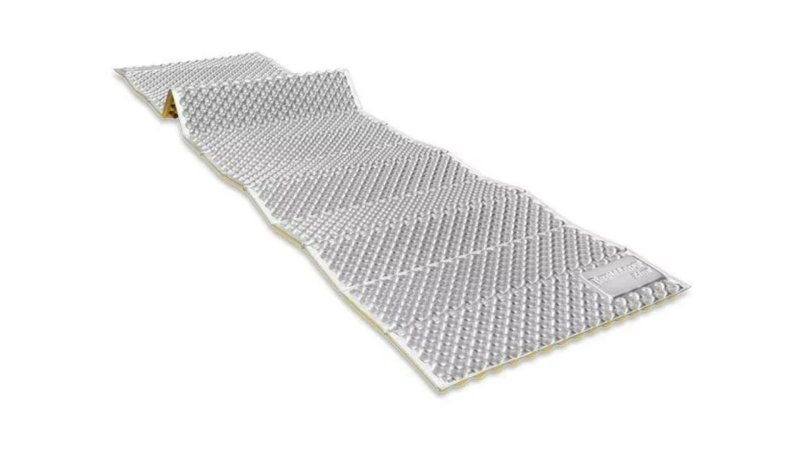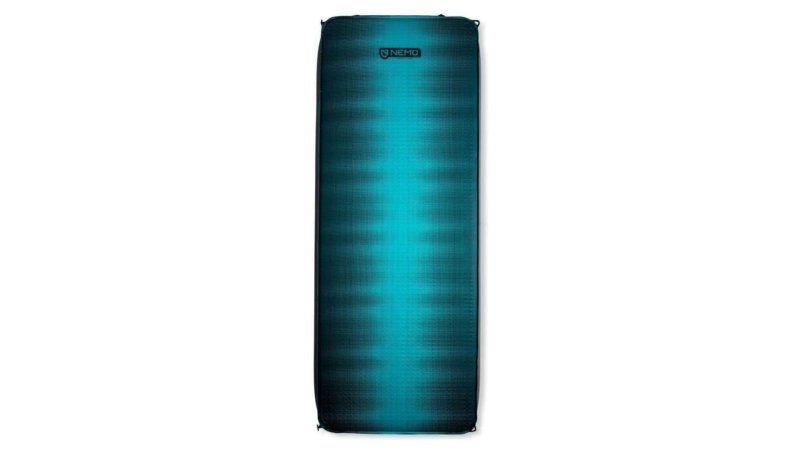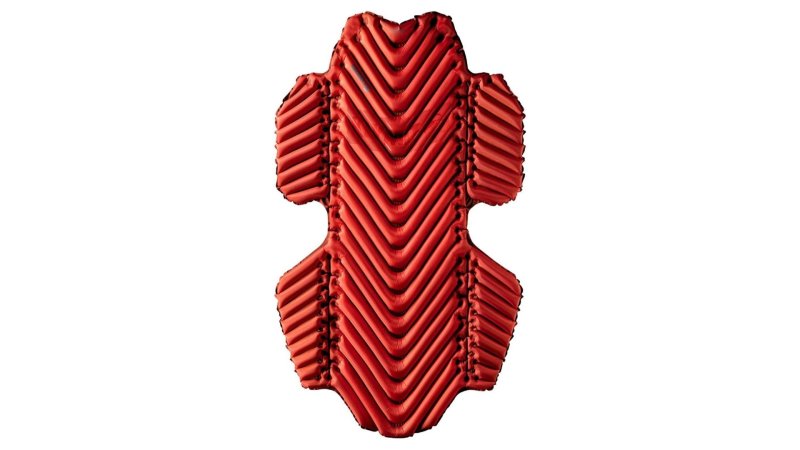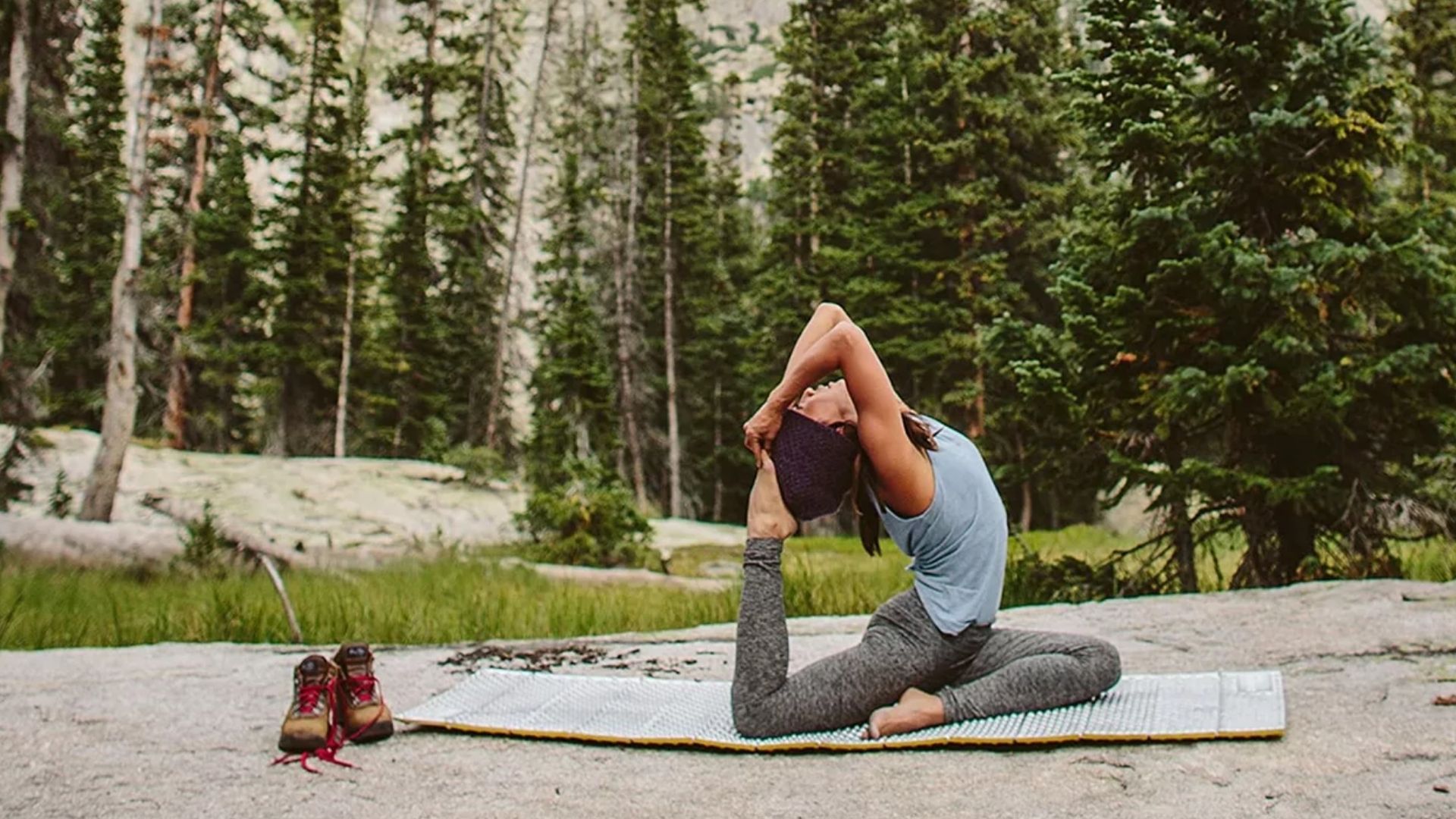

We may earn revenue from the products available on this page and participate in affiliate programs.
I tend to become a monster when I go nights on end without good sleep, so when my adventure partner and I began section hiking the Appalachian Trail a few years ago, researching the best air mattresses for camping was a top priority for both of us.
Then, after hiking almost 700 trail miles and sleeping in every weather condition imaginable, I can honestly say my air mattress is worth its weight in gold. Not only has it protected my backside from burly roots and rocks in quite a few sketchy bush campsites, but because I paid close attention to insulation value when making my purchase, my air mattress has allowed me to camp in four seasons in warmth and comfort.
But how do you find the best air mattresses for camping when you can’t take them for a test drive? Luckily for you, we’ve done the research and taken the guesswork out of finding a sleep solution that will work for your camping needs. Whether you are going glamping in your backyard or you are gearing up to tackle all 2,190 miles of the Appalachian Trail, we’ve got you covered.
Best Overall
NEMO Tensor Insulated Air Mattress
Pros
- Vortex pump included in new models but can also be purchased separately
- Trademarked Thermal Mirror material prevents cold air from getting through to your body for a cozy night’s sleep
- Exterior mattress fabric dampens noise
- Rectangular shape is more accommodating and comfortable than mummy shaped mattresses
- Low to medium price range depending on size
Cons
- Slightly heavier weight than some competitors
- Lower R-value doesn’t make this a practical pick for camping when it is less than 20 degrees Fahrenheit
- Slightly less durable exterior fabric
Product Specs
- R-value: 3.5, making it an excellent three-season camping option
- Thickness: A full three inches of loft provide cushioning and insulation from the cold ground
- Set up: A breeze, especially using the magical Vortex pump
- Packed size and weight: Slightly more than a pound and slightly smaller than a Nalgene bottle when rolled up
Best Value
Klymit Insulated Static V
Pros
- You can’t beat the price for this amount of insulation and cushion in a four-season air mattress
- V-shaped air chambers and side bumpers offer fantastic comfort and support
- Noise dampening construction means everyone gets a good night even if one person tosses and turns
- Fairly easy to set up and takedown
Cons
- 1.5 times larger than a Nalgene bottle
- A half a pound heavier than its competitors
- Does not come with a foot pump or pump sack
Product Specs
- R-value: 4.4 rating makes this a great all-season camping option
- Thickness: 2.5 inches of loft for cushioning and support
- Set up: Takes around 15 breaths to fully inflate
- Packed size and weight: At a pound and a half, heavier than many competitors
Editor’s Choice
Therm-a-Rest NeoAir XTherm MAX
Pros
- Provides maximum insulation for the most extreme sleep environments
- Proves that a high R-Value doesn’t mean added weight and bulk in your backpack
- Trademarked WingLock valve and included pump sack make for quick set up and tear down
- ThermaCapture technology prevents heat loss through the mattress
- Rectangular, generous shape
Cons
- Expensive, at $240.00 for regular size
- High R-value may be overkill for occasional campers in more temperate climates
- Lacks a fabric cover to dampen the noise of turning over
Product Specs
- R-value: A whopping 6.9 R-value means insulation in the coldest of temps
- Thickness: 2.5 inches of loft to buffer you from the cold and hard ground
- Set up: Use the included pump sack or take 15 breaths- the choice is yours
- Packed size and weight: Weighs in at 15 ounces and compacts down to less than the size of a Nalgene bottle
Best Mattress For Ultra-Lightweight Backpacking
Therm-a-Rest Nano Xlite
Pros
- Lightweight without compromising insulation and warmth
- Thickness buffers against tough terrain elements
- Easy installation and teardown
- Durable exterior materials and included repair kit
- Mid-priced, starting at $149 for a regular-sized mattress
Cons
- Loud when your camping mate turns over
- Mummy design can cause your legs to slip off onto the cold ground
- Not for use in hammocks due to slippery exterior material
Product Specs
- R-value: 4.2 R-value and Therma-Capture reflective material make this a great, year-round camping option
- Thickness: 2.5 inches of loft insulate and provide excellent protection from rocks and sticks
- Set up: Quick and easy with the wide Winglock Valve and included pump sack
- Packed size and weight: 8 ounces for the regular length and packs up smaller than a Nalgene bottle
Best Closed-Cell Foam Pad
Therm-a-Rest Z Lite Sole
Pros
- Affordable at less than $65.00
- Durable
- Offers the best insulation for its class and weight
- Fast set up
Cons
- Minimal thickness necessitates a campsite free of sticks and rocks, but layer them for added warmth and cushioning
- Not for four-season camping unless paired with another pad or an air mattress
- Not for back sleepers
- Larger pack downsize
Product Specs
- R-value: 2.0, meaning you have to layer pads to stay warm
- Thickness: .75 inches
- Set up: Super quick and easy shake out and lay flat set up
- Packed size and weight: Less than a pound and when folded up accordion-style, the size of two Nalgene bottles laid horizontally
Best Self-Inflating Mattress
NEMO Roamer
Pros
- Made for glamping with a bed-like feel
- Silky fabric on top keeps it quiet even if your co-camper tosses and turns
- High R-value means you won’t sacrifice warmth for plushness
- Max loft means no rocks and sticks poking you in the back
- Packs smaller and weighs less than similar options
Cons
- Weight and pack size make it prohibitive for anything other than car or pull in camping (although it does come with a stuff sack)
- Expensive, at almost $250.00
Product Specs
- R-value: 6.0, making this a perfect mattress for the most extreme winter nights
- Thickness: A whopping 4 inches of insulation with a silky top fabric
- Set up: Self inflates within seconds and multiple mattresses can be toggled together
- Packed size and weight: 8 pounds, 4 ounces, and packs down to duffle bag size
Best Hammock Mattress
Klymit Insulated Hammock Mattress
Pros
- Less slipping around in your hammock and more slipping into dreams
- Wrap around insulation and no cold tush
- Opens up hammock camping to all four seasons
- Can be used in any hammock, not just Klymit’s
Cons
- Bulkier and weightier than other air mattresses (but you also won’t be lugging a tent around)
- At just under $170.00, fairly pricey
- Large size and no pump requires more lung power to set up
- Bulkiness can make it harder to pack up
Product Specs
- R-value: A hefty 4.4 R-value makes this a 4 season air mattress
- Thickness: 3 inches of loft when fully inflated
- Set up: Addition of the wings mean more lung work necessary, requiring a good 18-20 deep breaths to blow it up
- Packed size and weight: At 2.2 pounds, compresses down to slightly larger than a Nalgene bottle
Why you should trust us
I am an outdoor fanatic, and the fun doesn’t stop for me when Old Man Winter shows his ugly face. Whether summiting 14,000-foot mountains or hiking through the snowy woods, I crave being in nature all year long. Professionally, I’ve also gutted countless military training exercises, including cold-weather training at the Marine Corps Mountain Warfare Training Center in Bridgeport, California.
Throughout all my experiences, I’ve learned that the quality of your gear can make or break an adventure. Well-constructed gear is mentally and physically worth every penny, but it doesn’t need to cost a pretty penny. Whether you are trying to find the best snow boots for women to keep your toesies warm or a way to stay toasty while sleeping during your fall and winter camping trips, I’ve learned the hard way that investing in the right gear is essential to comfort and fun in the wilderness.
Types of air mattresses for camping
Closed-cell
Lately, I’ve noticed more and more thru-hikers with accordion-style sleeping pads attached to the backs of their packs. After rolling into way too many campsites late in the afternoon after long days on the trail and having to spend what feels like an eternity blowing up my air mattress, I can see the appeal.
The name comes from the material used to manufacture the pad, rigid closed cell foam (CCF), which is a dense material with tiny trapped air pockets for insulation and cushioning. While closed-cell sleeping pads don’t provide the same R-value or comfort most blow-up mattresses will, they are lightweight, easy to set up, puncture-resistant, and way less expensive than most other sleep system options. They can also be layered for additive R-value and cushioning if you have the room.
Inflatable
Inflatable camping mattresses look a lot like pool mattresses. Both are generally made from the same type of polyvinyl material and when blown up provide 2.5- to 3-inches of air between your backside and the ground. Many inflatable camping mattresses also contain reflective material inside for additional insulation and comfort. Depending on whether you are a back or side sleeper, the firmness mattress can be tailored to suit your sleep style by simply adding a few extra breaths during setup.
While they take more time to blow up and take down than close cell options, can make a lot of noise if you toss and turn at night, and are more to puncture, inflatable mattresses are generally lightweight, cost-effective, pack down to less than the size of a Nalgene bottle, and provide excellent camping comfort. Four-season inflatable mattresses even contain down insulation for extra insulation, and many air mattresses even have a pump, either separate or integrated into their stuff sacks, for faster set up.
Self-inflating
Self-inflating camping mattresses are constructed out of a combination of open-cell foam and polyvinyl, providing up to 4-inches of insulation and max cushioning and comfort. To set up a self-inflating mattress, all you have to do is unroll the pad, open the air valve, and wait 20 to 30 minutes for the air cells in the foam to expand. You can even add air by manually adding a few breaths to the pad for firmer support.
Thanks to their dual-material construction, self-inflating camping mattresses provide arguably the most warmth, comfort, and quiet, regardless of your sleep style or the season. The downside is that this style of mattress is heavier and doesn’t pack down as small as a regular air mattress. However, if comfort is king for you and you can spare the room in your pack on your camping excursions, a self-inflating mattress is a luxurious and warm good way to go.
Key features of air mattresses for camping
R-value
R-value is used to rate the warmth of a camping mattress. The “R” refers to thermal resistance, or how well the material blocks cold air from moving from the ground, through the mattress, and to your body. It’s measured from one to seven. The higher the R-value, the warmer the mattress. However, if you want to maximize warmth, you can double up on sleeping pads to add more insulation. The bottom line is that if you want to stay warm in the winter, bring a camping mattress with a high R-value.
Set-up time
All air mattresses, even the self-inflating ones, require at least some manual inflation, so ease of use is an important factor to consider when choosing one. There is nothing worse on a bitingly cold day than having to spend 30 minutes setting up your mattress. While you can use a pump to save time, you should also consider the size and material of your air mattress, but in general larger air mattresses will require more air and time to completely inflate.
In terms of time, a closed-cell camping mattress takes the least amount of time to set up while a self-inflating mattress requires the most time. They require anywhere between 10 to 30 minutes for the air to fill the foam cells inside the polyvinyl shell. Why such a significant delta? The variance is impacted by the quality of manufacturing materials, elevation, and outside temperature. Simply put, the colder it is outside, the longer it will take to set up.
Thickness
Most experts agree that you need at least two inches between you and the ground to sleep comfortably at night and buffer you from sticks and stones. In colder climates, thicker mattresses offer more insulation.
Additionally, if you are a side sleeper, a thicker air mattress will prevent your hips from digging into the ground. Of course, thicker air mattresses also tend to weigh more and not pack down as small, so you will need to consider your camping requirements beforehand.
If you plan to drive into your campsite, investing in a plush, six-inch layer of marshmallow cushioning might be a practical choice. But if you plan to carry your camping mattress on your back during extended hikes, you may want to consider using a thinner mattress. This will save space and reduce the overall weight of your pack.
Materials
Some extreme hikers do everything possible to shave off every ounce they can from their gear. I get it. If you spend enough time in the field, the last thing you want is to feel weighed down by the contents of your pack. Luckily, most camping equipment makers today try to use materials that are lightweight, compact, durable, and designed for multi-purpose use.
When it comes to sleeping gear, though, never underestimate the value of a good night’s sleep. An air mattress that’s too light might not provide enough comfort and support your body needs to recover from a grueling day of hiking. While you should be selective about what you bring, don’t skimp on the sleeping gear. Good quality sleep is essential for your mental and physical well-being.
Size
When you’re looking at camping air mattresses, you want to consider both their inflated and deflated sizes. That way you’ll know they’ll be big enough to support your body, and small enough that they won’t be burdensome to carry.
When inflated, most camping air mattresses measure in at 72 inches by 20 inches, so big enough for an average adult, and when they’re deflated and rolled up, they’ll fit inside of a Nalgene bottle. However, there are other options for people who are smaller or larger than average as well, and those mattresses will pack up smaller or larger, too.
With all that said, you should be able to find the right balance if you remember a couple of things. If you’re concerned about weight, pay attention to the weight specified by the manufacturer. If you plan to camp year-round, you don’t need to sacrifice warmth to maintain a light load. There are quality air mattresses with a high R-value that weigh just a few ounces more than lower R-value options.
Benefits of air mattresses for camping
Comfort
You need good sleep when you hike and camp, but that’s easier said than done. Getting into deep sleep is a lot harder to do when you are tossing and turning because you are cold or uncomfortable. While it will take up space and weight in your backpack, a quality camping mattress will provide you the cushioning and insulation needed to maintain your body temperature throughout the night and promote deep, restful sleep.
Buffering
If you’ve ever read “The Princess and the Pea,” you know that even the slightest pebble between your back and the ground can feel like a boulder after laying on it for hours on end. A good camping mattress acts as a buffer between you and the ground and prevents you from feeling every stick and stone underneath you as you try to drop into REM sleep.
The concept of buffering is especially important if you plan to bush camp because you won’t likely find groomed sites waiting for you in the wilderness. We’ve done our fair share of bush camping in some burly locations and know from first-hand experience that a good camping mattress is worth its weight in gold when you are out of daylight and have to make the worst campsite work. You’d be surprised at what just two inches of foam and air can do to prevent sticks and stones from poking into your body as you try to sleep.
Recovery
Good sleep is essential to muscle recovery. According to medical experts, quality sleep will help your muscles recover faster and also regulate your mood and emotions. To have good quality sleep, you need to enter into a “deep sleep,” where your brainwaves slow down, eyes stop moving, heart rate slows, and body temperature drops. Experts say about a quarter of your sleep needs to be in this deep state for adequate recovery.
Pricing considerations for air mattresses for camping
Budget
A good quality camping mattress for a budget price will cost you between $50 and $100, but you might have to make a slight trade-off for weight and packed size, set up time, or durability. It’s a good price if you plan on using the mattress just a few times per year.
Mid-Tier
You can find a whole host of great camping mattresses for $100 and $150. In this mid-tier price range, you are more likely to be able to find a more perfect marriage of low packed weight, high R-value, durable materials, and small packed size with fewer tradeoffs. Plus, many mid-tier options generally come with a pump sack and larger air valves, saving your lungs extra work after a long day of hiking and making set up a breeze. At this price range, it’s a great long-term investment for the avid camper.
Premium
If you are looking for a more specialized camping mattress, you will most likely need to spend more than $150. For instance, if you plan to ditch your tent for a hammock, investing in an insulated and specially designed mattress like Klymit’s Insulated Hammock Mattress will ensure you stay comfortable in all four seasons without your mattress slipping around all night. If you are planning on an expedition in the extreme cold where your mattress can be the difference between life and death in the mountains, spending more than $150 will ensure your camping mattress is light, packs down small, and has an R-value of five or more.
How we chose our top picks
Since quality sleep has such a big impact on emotional regulation, mental health, and muscle recovery, comfort and weight were the top two criteria we considered when reviewing mattresses for camping. However, since there is nothing worse than rolling into a campsite in the dark and having to spend 30 minutes putting up your tent and setting up your bedding before being able to relax, we also considered ease of use and set up.
We also eliminated any mattresses that were too heavy or bulky to hike into a campsite from consideration since not all campsites allow direct access by car. We carefully considered the insulation value of each mattress we reviewed and only looked at those with an R-value of two or higher. Lastly, for consistency and comparison, we only refer to regular (versus long and wide) mattress size dimensions and weights when it comes to pricing.
FAQs on air mattresses for camping
You’ve got questions, Task & Purpose has answers.
Q. Why bother with a camping mattress?
A: A good night of sleep will impact your mood, emotion regulation, and the recovery of your muscles, so investing in a high-quality mattress can make or break a camping trip. Your body and fellow campers will thank you for it.
Q. How do I choose a mattress for camping?
A: You should consider the length of time and frequency you plan to use it as well as where and in what weather conditions. While you could probably get away with using plastic pool floaties for one night on a concrete tent pad, that isn’t a practical solution for multi-day trips. If you are a thru- or long-distance hiker, you also want to consider weight, set up time, and packed size.
Q. What kinds of camping mattresses are there?
A: Pool floaties aside, there are generally three types of camping mattresses: closed-cell, blow-up, and self-inflating. Each has its advantages when it comes to insulation, packed size, and overall comfort and ease of use. When, how often, and where you plan to camp should determine which type is best suited for your needs.
Q. How about the insulation aspect (R-value)?
A: Simple answer. Don’t skimp on the R-value if getting a good night’s rest is important to you in the wilderness. Sleeping on a camping mattress with a high R-value won’t make you feel hot, but it will provide a layer of protection between you and the cold ground, making for a much more comfortable night.
Our gear section
Kate Germano served in the Marine Corps from 1996 to 2016. She’s a closet gear freak who enjoys schlepping packs with her better half on long Appalachian Trail section hikes. She’s also into true crime, Qwirkle tournaments, and animals, but definitely not Dungeons and Dragons.
